After all, most people preferred flat response.
FR is not the only thing that make up a driver. You will find out that many other things are "right" in the product that provide "right" FR. May be it is just about "right" manufacturer? 😀
Nothing unfortunate here... the whole thread is about subjective preferences. And at the end, a home hifi system is about enjoying the music (again subjective).
Ha! My main objective actually: final result must bring enjoyment.
Of course Peter, agree.In my opinion these tests shows that subjective opinions have a value.
After all, most people preferred flat response.
Yes, but that is half the story. Out of 50 responses, 20 were for the 2 drivers with the flattest response curves.17 votes fell in favor of drivers exhibiting RESA characteristics. So, it is 40% vs 34% - not a very big gap.
I was not surprised to see folks vote for the flatter drivers; I was a bit surprised to see a strong preference for the alu cones (incl myself). In the end I voted for driver E, but was weighing in driver A and G also for quite some time. And for driver E, it was some of the rational brain and experience influencing me - ¨go for the less bright sounding driver (less bright vs A and G), it will sound fine in stereo, and you will like it more in the long run.¨ 🙂
Hi,
Round 2 - Reveal : http://www.diyaudio.com/forums/full...-3in-5in-drivers-round-2-a-9.html#post4328938
Would it be possible to show the CSD (waterfall) responses ?
Round 2 - Reveal : http://www.diyaudio.com/forums/full...-3in-5in-drivers-round-2-a-9.html#post4328938
Would it be possible to show the CSD (waterfall) responses ?
Very interesting. My two top drivers for this test were A and E. In the end, the scale dipped more in favour of A. Never would have guessed it was the driver I sponsored for the test 😀
Also never would have guessed that the Alpair 7 would score so badly on my list. G was the first one to drop out simply due to me disliking the sound of it.
Also never would have guessed that the Alpair 7 would score so badly on my list. G was the first one to drop out simply due to me disliking the sound of it.
Very interesting. My two top drivers for this test were A and E. In the end, the scale dipped more in favour of A. Never would have guessed it was the driver I sponsored for the test 😀
Also never would have guessed that the Alpair 7 would score so badly on my list. G was the first one to drop out simply due to me disliking the sound of it.
Great driver, that little Peerless - thanks for sponsoring it! We all got to experience a less-known star in the world of great sounding full range drivers.
A was unusual in its shape of having a a large 5 to 10dB bump from 2khz to 3khz. That feature may be hard on our ears if we hear it. OTOH, having mild 2-3dB bump in the 2.5kHz range can often make a good driver "Great" as it allows imaging and soundstage to lock in and become very 3 dimensional. I think Wesayso's towers benefitted from just a mild EQ boost there which made all the difference in the world. Perhaps that was the magic behind this driver? It is the only driver with a zinger of a 20kHz resonance that shows up in the impulse response. This will make everything have exaggerated shimmer or air.
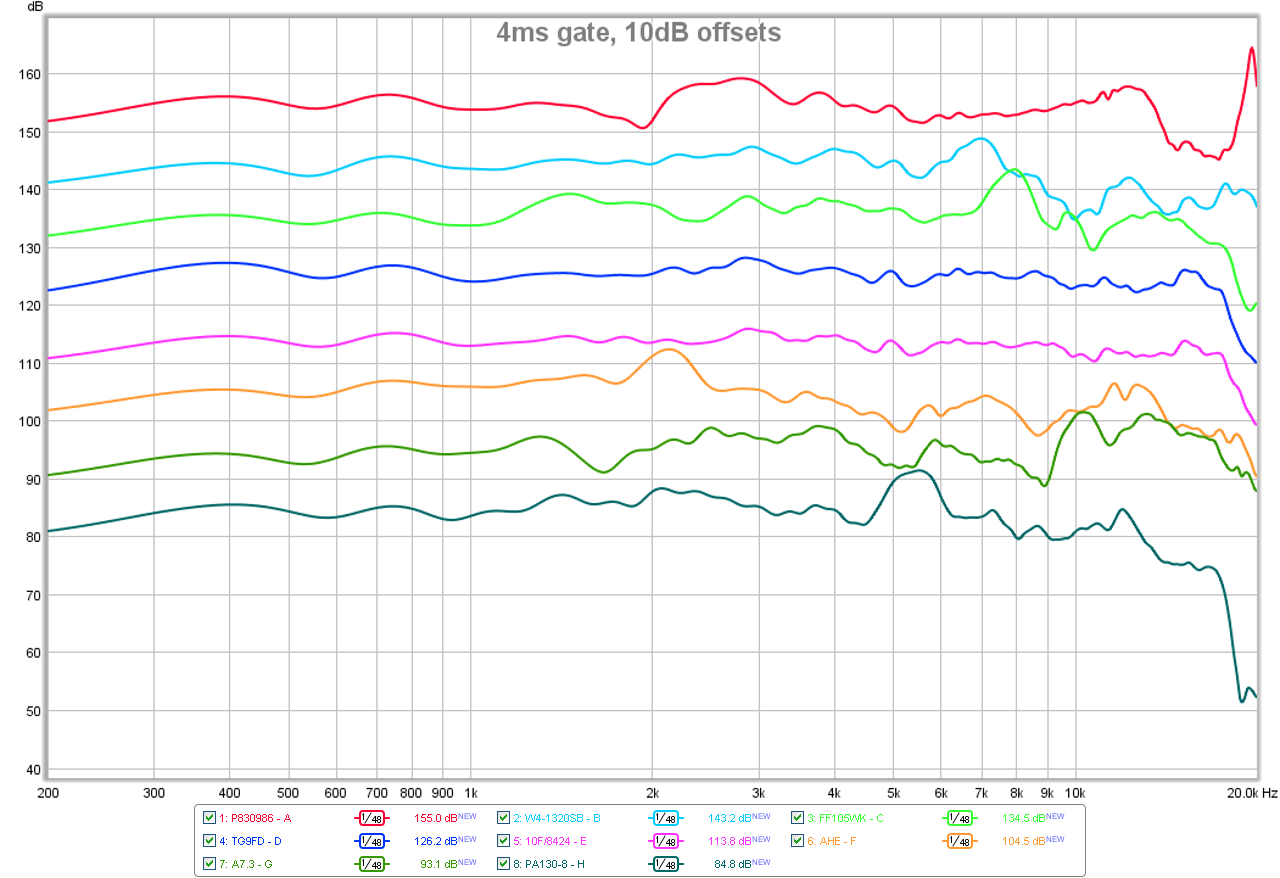
xrk971,
Couple of questions:
1. How much of a bump does the Alp 7.3 have between 2-3 Khz range?
2. The 20 Khz "zinger" on the P830986 - what about folks who don't have hearing that doesn't go that far? There's a null area below the HF bump. If people with hearing topping out ~16 Khz still perceive "air" on this driver, which part of the FR spectrum is likely to be the source?
xrk971,
Couple of questions:
1. How much of a bump does the Alp 7.3 have between 2-3 Khz range?
2. The 20 Khz "zinger" on the P830986 - what about folks who don't have hearing that doesn't go that far? There's a null area below the HF bump. If people with hearing topping out ~16 Khz still perceive "air" on this driver, which part of the FR spectrum is likely to be the source?
From the graph it looks like A7.3 has a plateau from 1.7kHz to 4kHz of about +8dB or so.
For P830986 the rise at about 10-12kHz may be what is giving sense of "air".
Before suggesting a five way, I think a two way mid/treble could rescue a few of the "lesser" units we are talking about here.
@ snup, but it's already a 2 way you are listening to, making it a 3 way if you add a tweeter. Throw in a sub and you are at 4 way (lol).
I think the goal here, in line of this part of the forum is finding the gems that can work well in a FAST. Multi way gives you a whole new set of problems to deal with.
There's something about that full range sound, is an often heard or read sentence.
I've come to agree with that, even if I needed 50 speakers to get it 😉.
I think the goal here, in line of this part of the forum is finding the gems that can work well in a FAST. Multi way gives you a whole new set of problems to deal with.
There's something about that full range sound, is an often heard or read sentence.
I've come to agree with that, even if I needed 50 speakers to get it 😉.
I wasnt going to suggest 5-way. It was a joke. My point was, that a lot of the caracter (which you dont want) is generated at higher frequences, I had my head stuck to a Snell J (fiddled) for this listening. I do understand Your FAST and arrays.
CSD Plots
Below are the cumulative spectral decay (CSD) plots for all the drivers in Round 2, plus the winner from Round 1 - the TC9FD.
Note that the CSD includes the inherent CSD of the driver combined with the enclosure that it is mounted in, which is the same enclosure for all cases (Nautaloss sealed spiral TL with polyfill stuffing). The CSD here may not be as good as that obtained by a bare driver in an IEC open baffle. However, for the purposes of relative comparison, it is good as the rear chamber enclosure and baffle are identical in each case. Furthermore, the impulse responses show that there is no reflection under 4 ms and I have set the window (gate) to 3.7ms to avoid picking up any room effects.
The CSD was calculated in REW using the following parameters in the "Controls" dialog:
TC9FD:
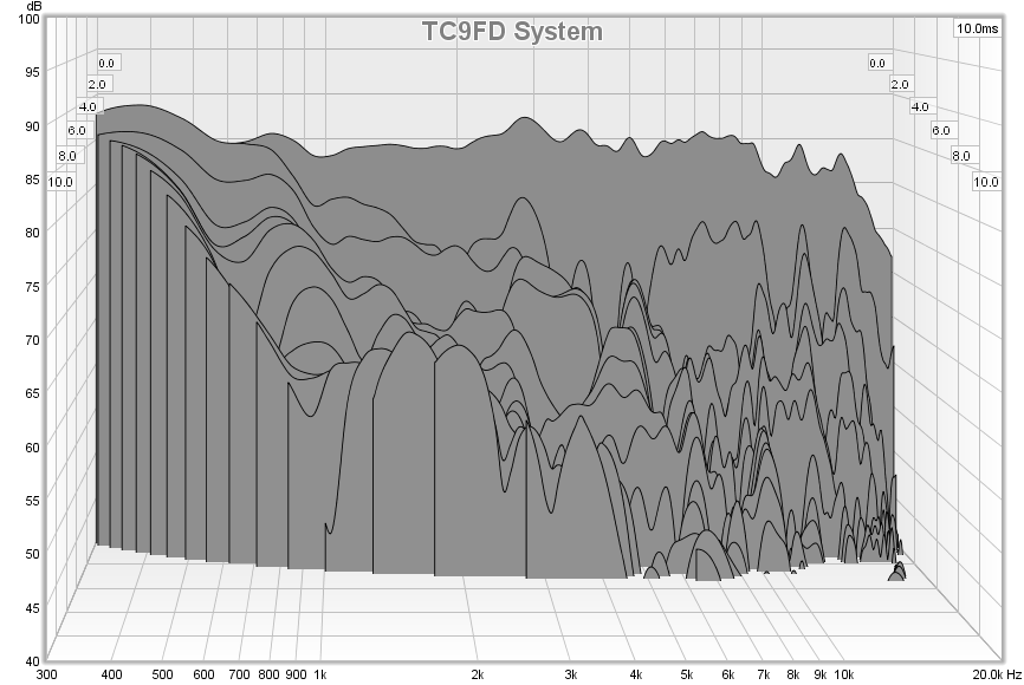
P830986:
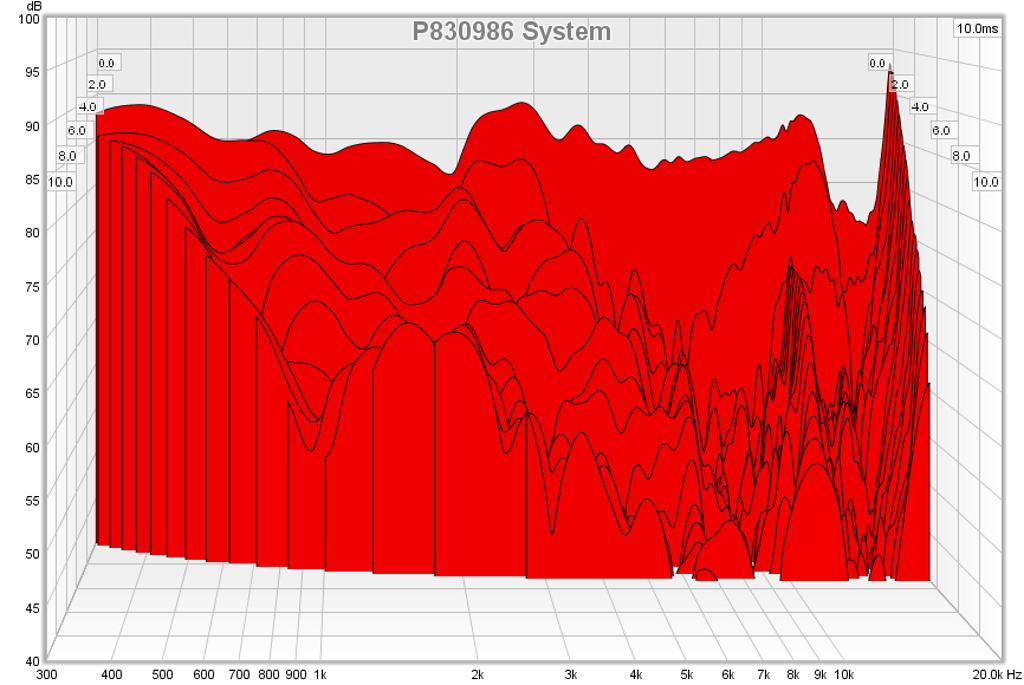
W4-1320SB:
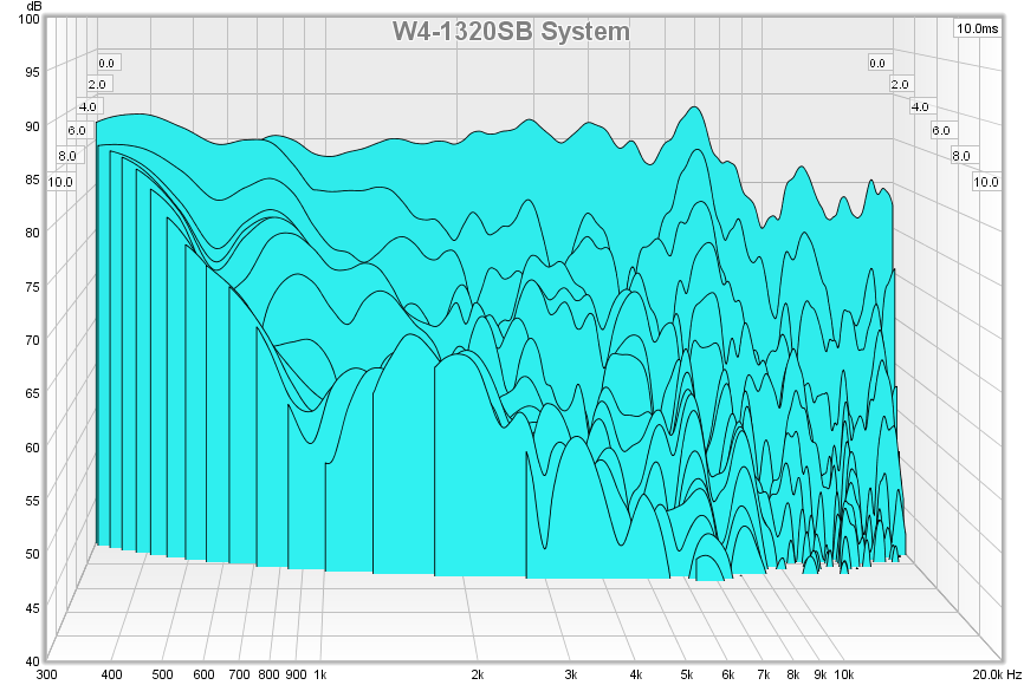
FF105WK:
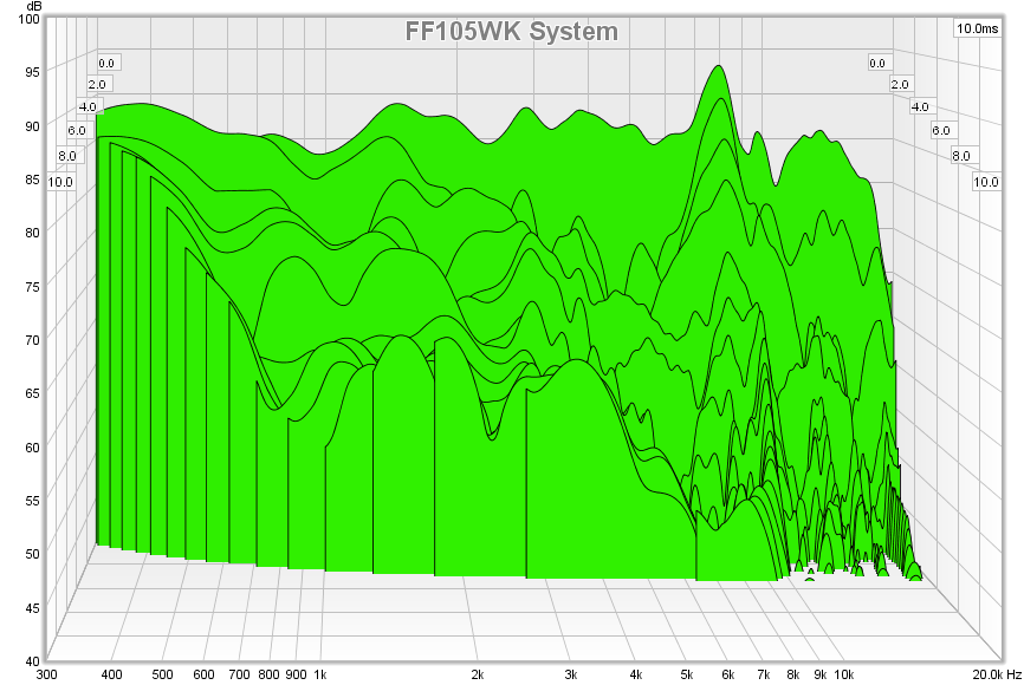
TG9FD:
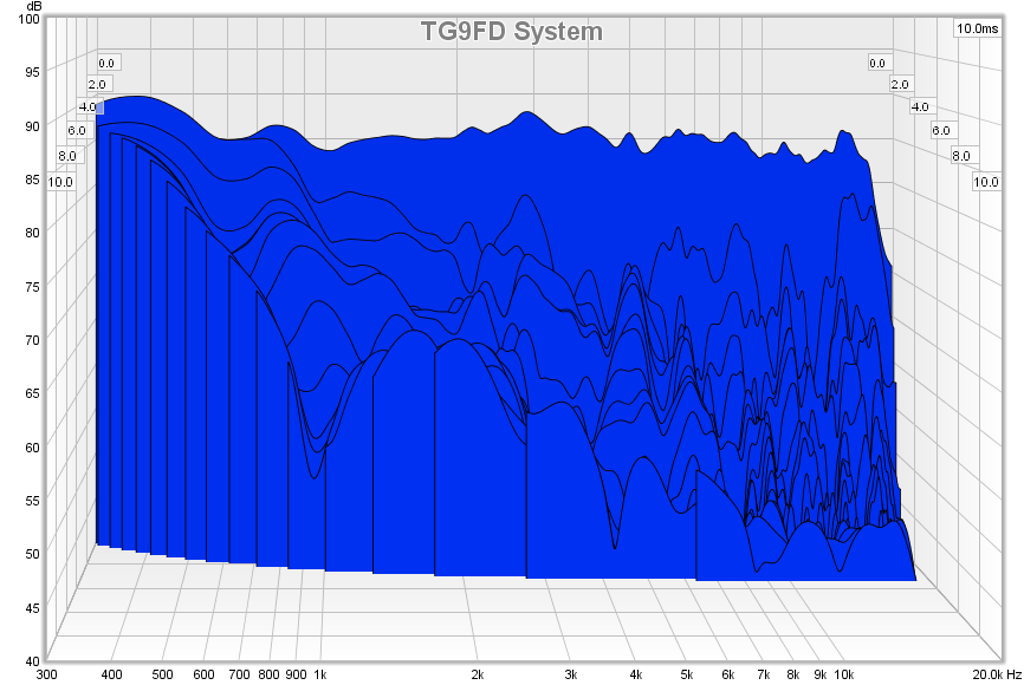
10F/8424:
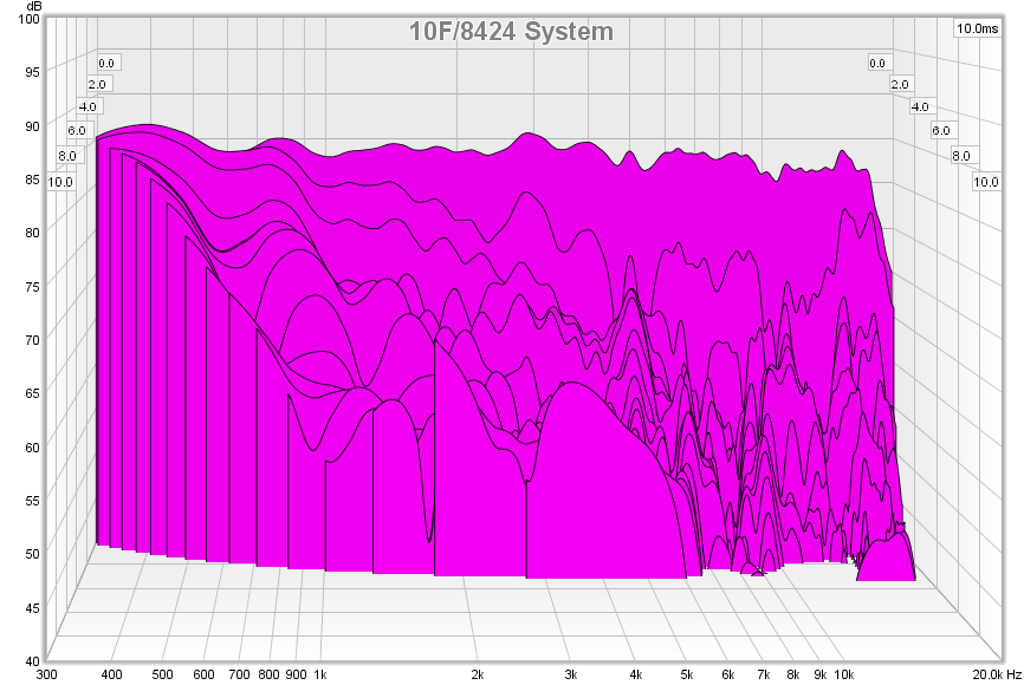
AHE:
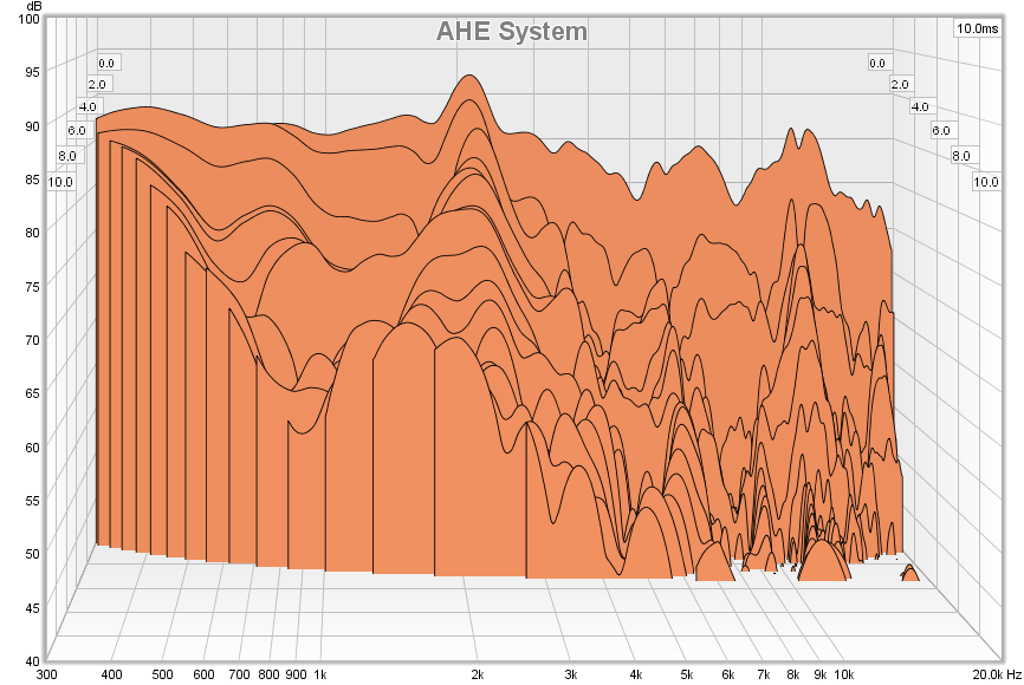
A7.3:
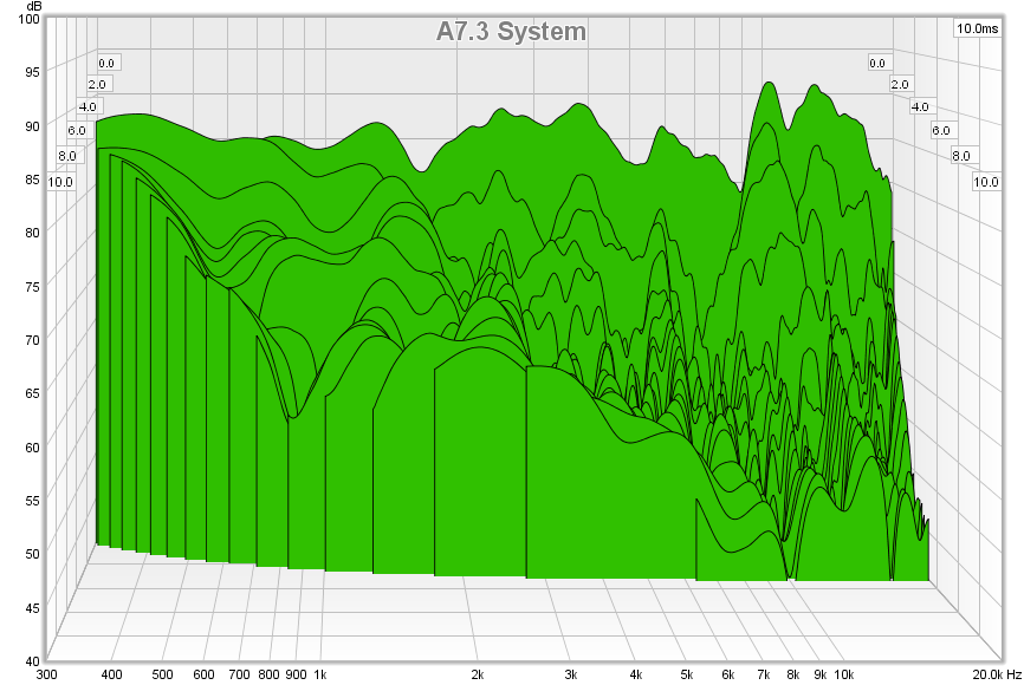
PA130-8:

Hi,
Round 2 - Reveal : http://www.diyaudio.com/forums/full...-3in-5in-drivers-round-2-a-9.html#post4328938
Would it be possible to show the CSD (waterfall) responses ?
Below are the cumulative spectral decay (CSD) plots for all the drivers in Round 2, plus the winner from Round 1 - the TC9FD.
Note that the CSD includes the inherent CSD of the driver combined with the enclosure that it is mounted in, which is the same enclosure for all cases (Nautaloss sealed spiral TL with polyfill stuffing). The CSD here may not be as good as that obtained by a bare driver in an IEC open baffle. However, for the purposes of relative comparison, it is good as the rear chamber enclosure and baffle are identical in each case. Furthermore, the impulse responses show that there is no reflection under 4 ms and I have set the window (gate) to 3.7ms to avoid picking up any room effects.
The CSD was calculated in REW using the following parameters in the "Controls" dialog:
- Total Slices=51
- Time Range=10ms
- Window=3.7ms
- Rise Time=0.2ms
- Smoothing=1/48th oct
- Use CSD Mode = YES
- X view angle = -6
- Y view angle = 62
- Z veiw angle =161
TC9FD:

P830986:

W4-1320SB:

FF105WK:

TG9FD:

10F/8424:

AHE:

A7.3:

PA130-8:

Attachments
-
 tc9fd-csd.png198.6 KB · Views: 442
tc9fd-csd.png198.6 KB · Views: 442 -
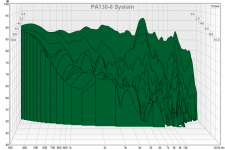 pa130-8-csd.png205.6 KB · Views: 433
pa130-8-csd.png205.6 KB · Views: 433 -
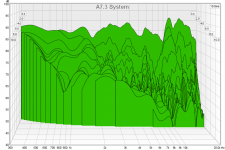 a7.3-csd.png231.3 KB · Views: 434
a7.3-csd.png231.3 KB · Views: 434 -
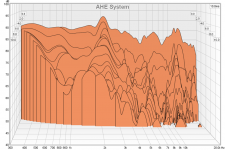 ahe-csd.png268.5 KB · Views: 437
ahe-csd.png268.5 KB · Views: 437 -
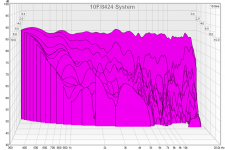 10f-8424-csd.png217.1 KB · Views: 459
10f-8424-csd.png217.1 KB · Views: 459 -
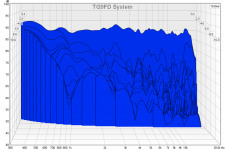 tg9fd-csd.png219.1 KB · Views: 437
tg9fd-csd.png219.1 KB · Views: 437 -
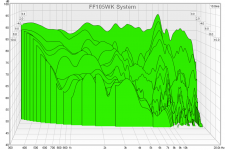 ff105wk-csd.png218.2 KB · Views: 443
ff105wk-csd.png218.2 KB · Views: 443 -
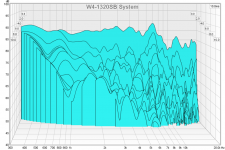 w4-1320sb-csd.png255.8 KB · Views: 437
w4-1320sb-csd.png255.8 KB · Views: 437 -
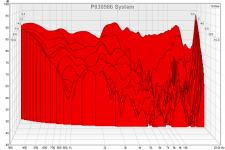 p830986-csd.png212 KB · Views: 434
p830986-csd.png212 KB · Views: 434
Last edited:
Spectrograms
Another way of looking at the energy distribution in the sound and how fast it decays is the "Spectrogram" contour plot. Here using 3.7ms window and 10ms range, with contour colors normalized to peak SPL value.
TC9FD:
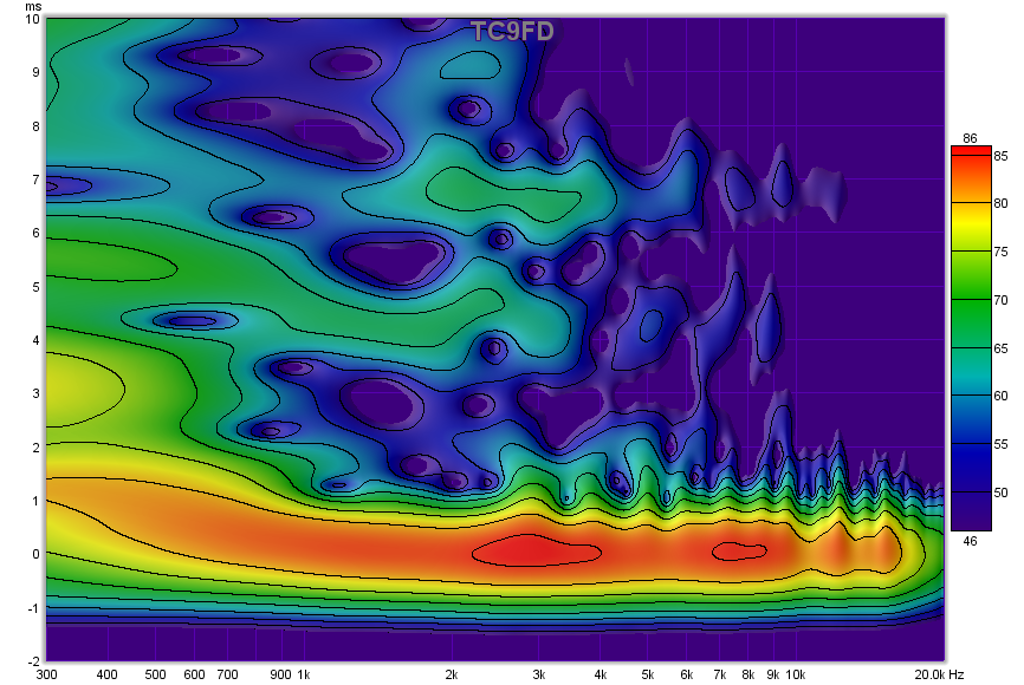
P830986:
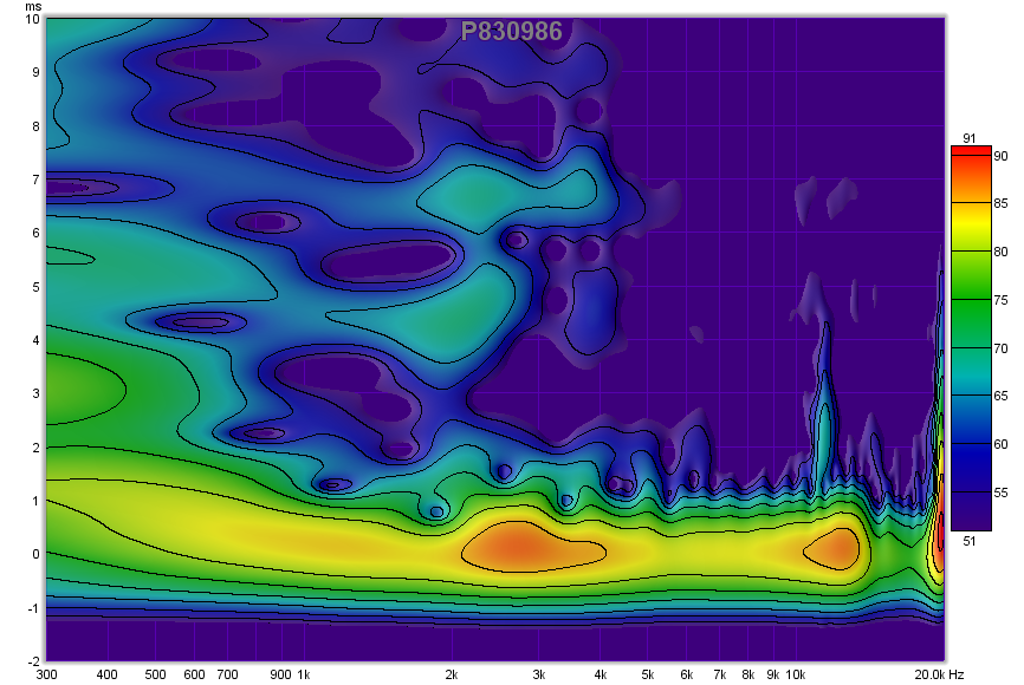
W4-1320SB:
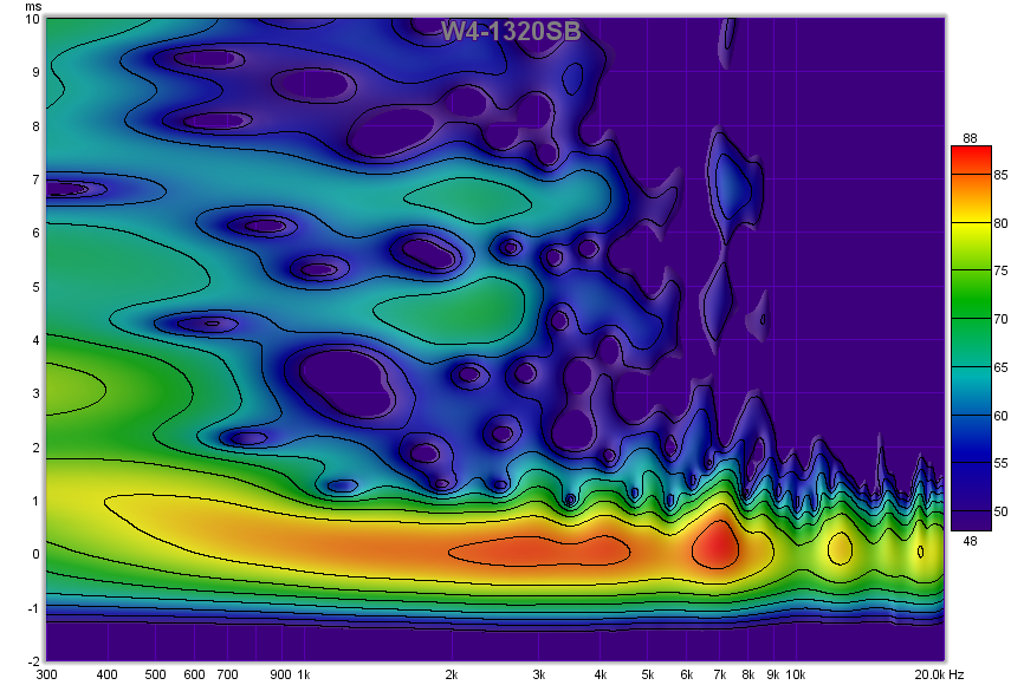
FF105WK:

TG9FD:

10F/8424:
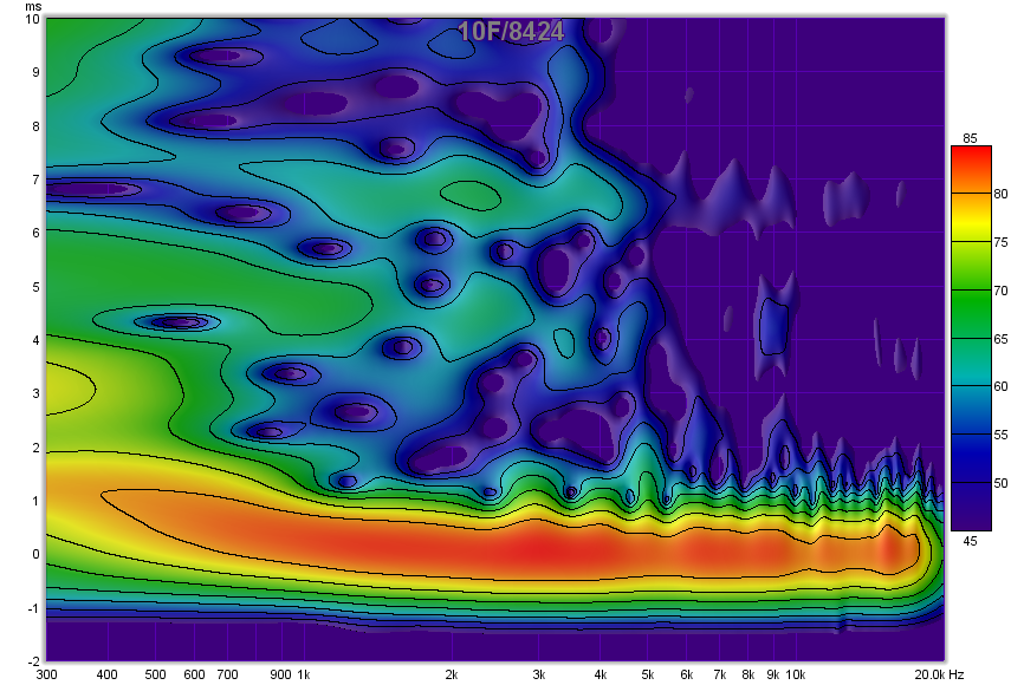
AHE:
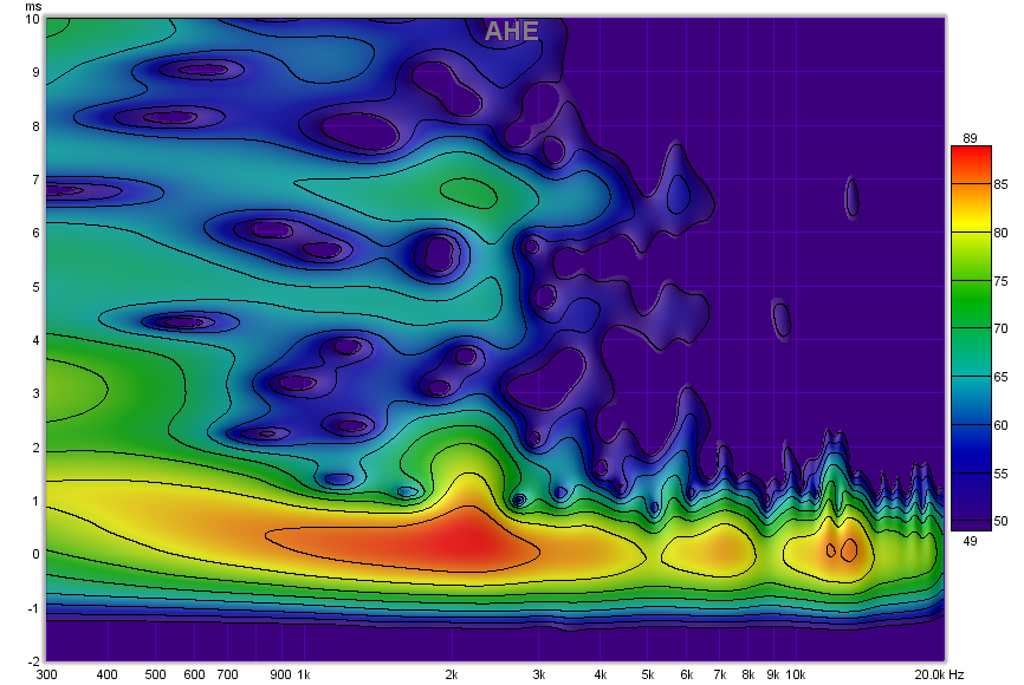
A7.3:
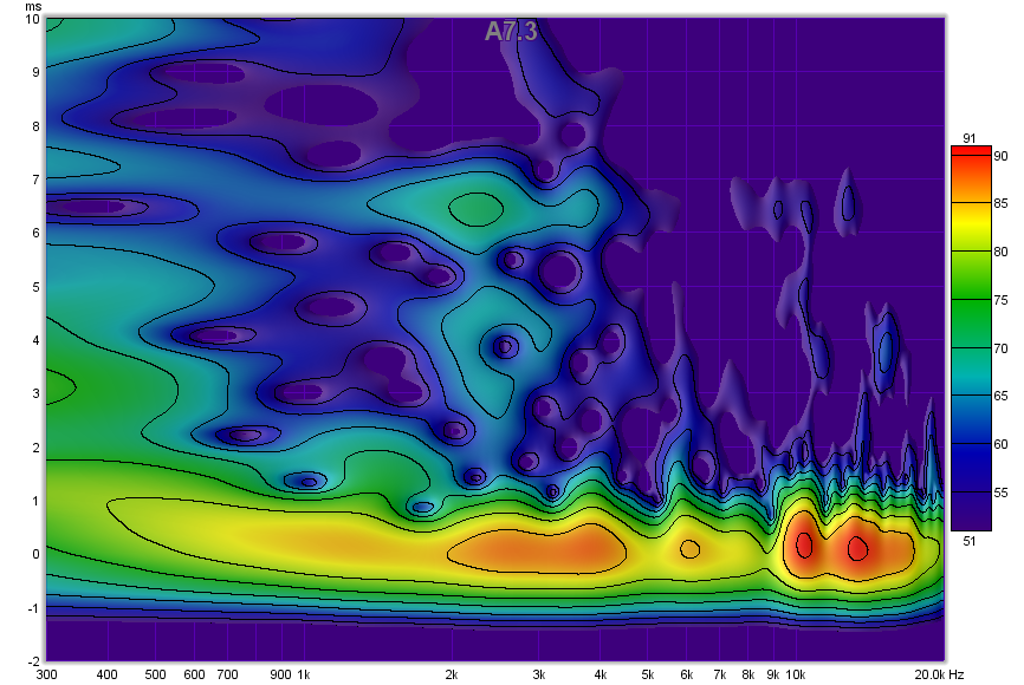
PA130-8:
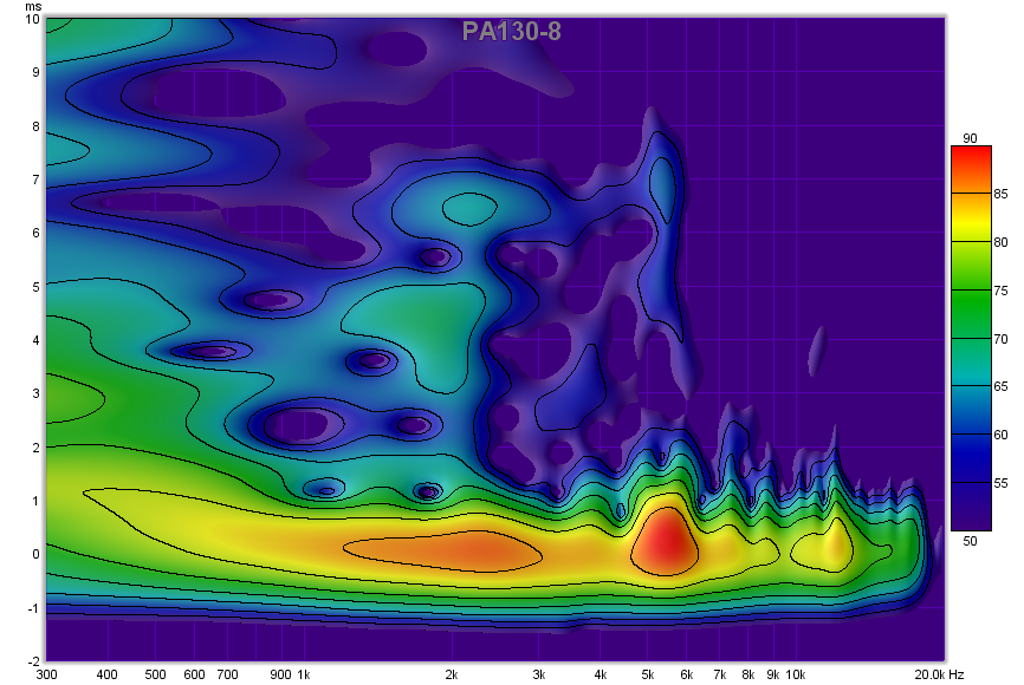
Another way of looking at the energy distribution in the sound and how fast it decays is the "Spectrogram" contour plot. Here using 3.7ms window and 10ms range, with contour colors normalized to peak SPL value.
TC9FD:

P830986:

W4-1320SB:

FF105WK:

TG9FD:

10F/8424:

AHE:

A7.3:

PA130-8:

Attachments
-
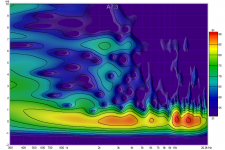 a7.3-sg.png727.7 KB · Views: 439
a7.3-sg.png727.7 KB · Views: 439 -
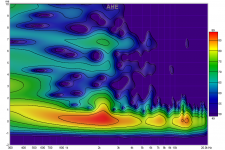 ahe-sg.png708.9 KB · Views: 426
ahe-sg.png708.9 KB · Views: 426 -
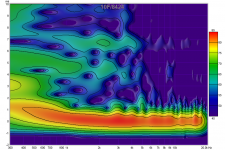 10f-824-sg.png758.2 KB · Views: 437
10f-824-sg.png758.2 KB · Views: 437 -
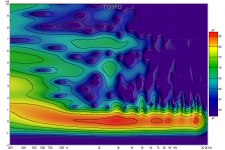 tg9fd-sg.png732.8 KB · Views: 426
tg9fd-sg.png732.8 KB · Views: 426 -
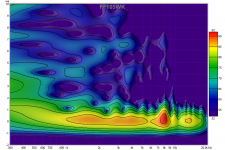 ff105wk-sg.png684.9 KB · Views: 423
ff105wk-sg.png684.9 KB · Views: 423 -
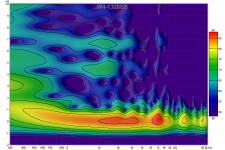 w4-1320sb-sg.png740.7 KB · Views: 437
w4-1320sb-sg.png740.7 KB · Views: 437 -
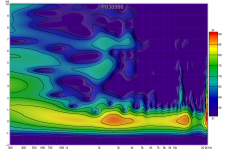 p830986-sg.png627.7 KB · Views: 426
p830986-sg.png627.7 KB · Views: 426 -
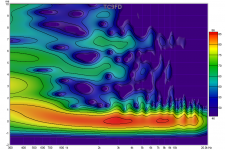 tc9fd-sg.png766.9 KB · Views: 431
tc9fd-sg.png766.9 KB · Views: 431 -
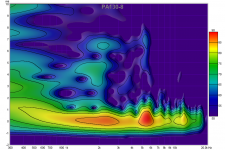 pa130-9-sg.png662.5 KB · Views: 420
pa130-9-sg.png662.5 KB · Views: 420
Last edited:
FR is not the only thing that make up a driver. You will find out that many other things are "right" in the product that provide "right" FR. May be it is just about "right" manufacturer? 😀
I sincerely doubt this is about the right brand! After all, this was blind, despite some people wanted to derail the outcome by unwanted comments;o)
If the response is even AND MLSSA is good, people will fall to their knee's and pay homage to the superior driver. No matter what brand! Also I believe that MLSSA have to be done in an infinite baffle in order to get rid of possible internal reflections. I.e. not a boxed driver!!
Peter
Last edited:
I sincerely doubt this is about the right brand! After all, this was blind, despite some wanted to derail the outcome by unwanted comments;o)
If the response is even AND MLSSA is good, people will fall to their knee's and pay homage to the superior driver. No matter what brand! Also I believe that MLSSA have to be done in an infinite baffle in order to get rid of possible internal reflections. I.e. not a boxed driver!!
Peter
If you look in this thread, I show how the Nautaloss sealed spiral TL has essentially the same response as an open baffle - that is, it has very little back reflections to affect the frequency response. With that said, it will have (some) effect on the CSD. However, this effect would be the same for all drivers tested as they all have the same enclosure - which is not a "box" but a slowly tapering spiral, kind of like B&W's Nautilus - which serves as an acoustic "black hole".
http://www.diyaudio.com/forums/full-range/270094-objective-comparison-3in-4in-class-full-range-drivers.html
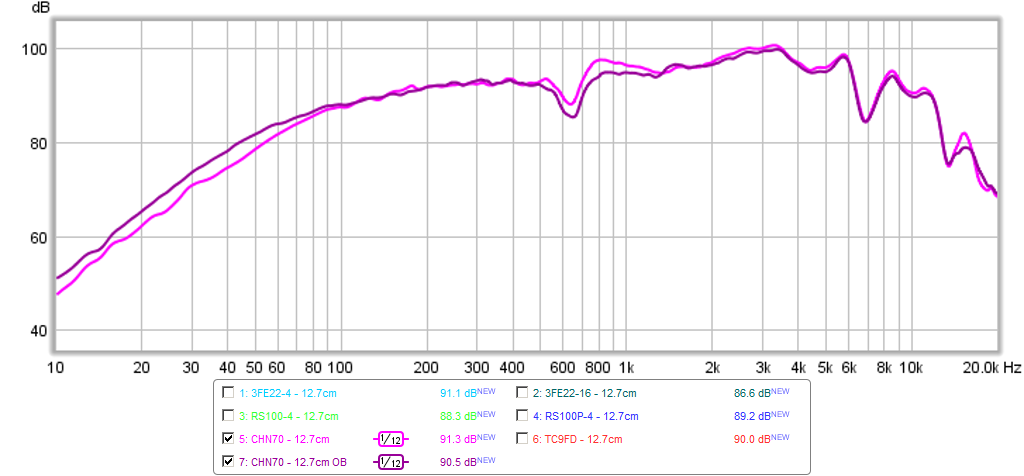
In the overview of the Spectogram plots (the little attached thumbnails) it's pretty easy to spot the former family members. Remarkably similar in behaviour despite the difference in materials used.
I agree that this should not be viewed at as a pure CSD test but still it is a useful comparison.
Thanks X, for all the work here.
I agree that this should not be viewed at as a pure CSD test but still it is a useful comparison.
Thanks X, for all the work here.
- Home
- Loudspeakers
- Full Range
- A Subjective Blind Comparison of 3in to 5in drivers - Round 2